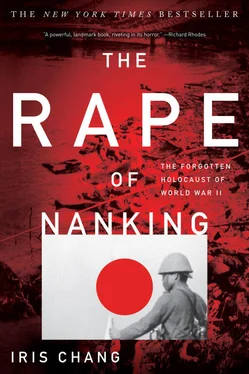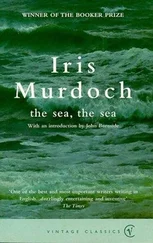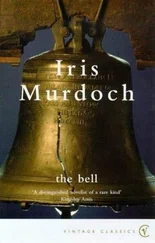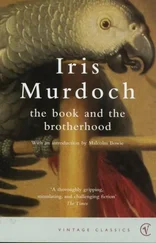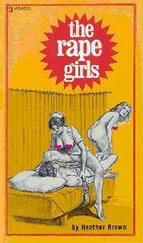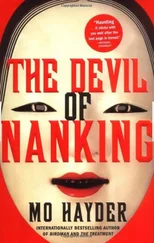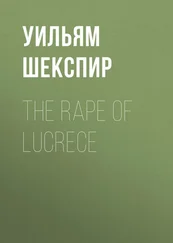90. Some soldiers employed Chinese traitors: Gao Xingzu, Wu Shimin, Hu Yungong, and Zha Ruizhen, “Japanese Imperialism and the Massacre in Nanjing.”
90. An estimated one-third of all rapes: Fitch, “Nanking Outrages,” January 10, 1938, Fitch Collection.
90. Survivors even remember soldiers: Hou Zhanqing (survivor), interview with the author, Nanking, July 29, 1995.
90. No place was too sacred: Fitch, “Nanking Outrages,” January 10, 1938, Fitch Collection.
91. “Every day, twenty-four hours a day”: Quote in Dagong Daily reprinted in Gao Xingzu, Wu Shimin, Hu Yungong, and Zha Ruizhen, “Japanese Imperialism and the Massacre in Nanjing.”
91. “clean the penis by her mouth”: Hsu Shuhsi, Documents of the Nanking Safety Zone , no. 436, p. 154.
91. “rammed a stick up her instead”: Dick Wilson, p. 76; Hsu, p. 123.
91. Many women in their eighties: Hu Hua-ling, “Chinese Women Under the Rape of Nanking”; “All Military Aggression in China Including Atrocities Against Civilians and Others: Summary of Evidence and Note of Argument,” submitted to IMTFE by David Nelson Sutton, November 4, 1946, p. 41, National Archives.
91. Little girls were raped so brutally: Shuhsi Hsu, Documents of the Nanking Safety Zone, no. 428, p. 152.
91. Chinese witnesses saw Japanese rape girls under ten: Hou Zhanqing interview.
91. In some cases, the Japanese sliced open: “Deutsche Botschaft China,” report no. 21, starting on page 114, in the German diplomatic reports, National History Archives, Republic of China. Another account reads: “Since the bodies of most of these young girls were not yet fully developed, they were insufficient to satisfy the animal desires of the Japanese. Still, however, they would go ahead, tear open the girls’ genitals, and take turns raping them”; Du Chengxiang, A Report on the Japanese Atrocities (Shidai Publishing Co., 1939), p. 55, reprinted in Gao Xingzu, Wu Shimin, Hu Yungong, and Zha Ruizhen, “Japanese Imperialism and the Massacre in Nanjing.”
91. Even advanced stages of pregnancy: Hu Hua-ling, “Chinese Women Under the Rape of Nanking”; Robert Wilson, letter to family, December 30, 1937, folder 3875, box 229, record group 11, Yale Divinity School Library.
91. One victim who was nine months pregnant: IMTFE judgment, p. 451, National Archives.
91. At least one pregnant woman was kicked: Chu Yong Ung and Chang Chi Hsiang, in “All Military Aggression in China Including Atrocities Against Civilians and Others,” p. 37.
91. After gang rape, Japanese soldiers: “A Debt of Blood: An Eyewitness Account of the Barbarous Acts of the Japanese Invaders in Nanjing,” Dagong Daily (Wuhan), February 7, 1938; Xinhua Daily, February 24, 1951; Hu Hua-ling, “Chinese Women Under the Rape of Nanking”; Tang Shunsan, interview with the author, Nanking, People’s Republic of China, July 26, 1995; Gao Xingzu, Wu Shimin, Hu Yungong, and Zha Ruizhen, “Japanese Imperialism and the Massacre in Nanjing.”
91. One of the most notorious stories of such a slaughter: The story of Hsia’s family (now Xia under the pinyin system) is told in a document describing the pictures taken at Nanking after December 13, 1937, Ernest and Clarissa Forster Collection, box 263, record group 8, Miscellaneous Personal Papers, Yale Divinity School Library.
92. She was to endure brain damage: Xia Shuqing (then the eight-year-old survivor), interview with the author, Nanking, July 27, 1995.
93. “While I was there”: Hsu Chuang-ying (witness), testimony before the IMTFE, Records from the Allied Operational/Occupation Headquarters, entry 319, record group 331, p. 2572, National Archives.
93. A similar story, no less grisly: Document about John Magee film no. 7 describing the pictures taken at Nanking after December 13, 1937, Ernest and Clarissa Forster Collection.
93. Many other girls, tied naked to chairs: Bergamini, Japan’s Imperial Conspiracy, p. 27. See the photograph of one such victim in the illustrations section of this book. It is unclear whether the girl in the photograph is unconscious or dead.
93. “According to eyewitness reports”: Gao Xingzu, Wu Shimin, Hu Yungong, and Zha Ruizhen, “Japanese Imperialism and the Massacre in Nanjing.”
94. During the mass rape the Japanese destroyed children: For an account of smothering of infants, see George Fitch diary, entry dated December 17, 1937, quoted in Commanding Officer C. F. Jeffs to the Commander in Chief, U.S. Asiatic Fleet (letterhead marked the U.S.S. Oahu ), intelligence summary filed for the week ending February 13, 1938, folder A8–21/FS#3, box 195, entry 81, record group 38, National Archives; and James McCallum diary, January 7, 1938, Yale Divinity School Library. For an example of a child choking to death from clothes stuffed in her mouth while her mother was raped, see Chang Kia Sze, testimony of April 6, 1946, Records from the Allied Operational/Occupation Headquarters, IMTFE transcript, entry 319, record group 331, pp. 4506–7, National Archives.
94. “415. February 3, about 5 P.M.”: Hsu Shuhsi, editor, Documents of the Nanking Safety Zone. Prepared under the Auspices of the Council of International Affairs, Chung King (Shanghai, Hong Kong, Singapore: Kelly & Walsh, Ltd., 1939), p. 159.
94. “stuck a wire through his nose”: Wong Pan Sze (24 at the time of the tribunal, 15 at the time of the Rape of Nanking), testimony before the IMTFE, Records of the IMTFE, court exhibits, 1948, World War II War Crimes Records Collection, box 134, entry 14, record group 238, National Archives.
94. Perhaps one of the most brutal forms of Japanese entertainment: “Sometimes the soldiers would use bayonets to slice off the women’s breasts, revealing the pale white ribs inside their chests. Sometimes they would pierce their bayonets into the women’s genitals and leave them crying bitterly on the roadside. Sometimes the Japanese took up wooden bats, hard reed rods, and even turnips, forced the implements into the women’s vaginae, and violently beat them to death. Other soldiers stood by applauding the scene and laughing heartily”; quote from Military Commission of the Kuomingtang, Political Department, “A True Record of the Atrocities Committed by the Invading Japanese Army,” compiled July 1938, reprinted in Gao Xingzu, Wu Shimin, Hu Yungong, and Zha Ruizhen, “Japanese Imperialism and the Massacre in Nanjing”; Wong Pan Sze testimony before the IMTFE; Hu Hua-ling, “Chinese Women Under the Rape of Nanking.”
94. For instance, one Japanese soldier: Forster to his wife, January 24, 1938, Ernest and Clarissa Forster Collection.
94–95. And on December 22, in a neighborhood near the gate: Zhu Chengshan, The Testimony of the Survivors of the Nanjing Massacre, p. 50.
95. Chinese men were often sodomized: see Shuhsi Hsu, Documents of the Nanking Safety Zone , no. 430, p. 153. Also Dick Wilson, p. 76.
95. At least one Chinese man was murdered: “Shisou houde nanjing (Nanking After the Fall into Japanese Hands),” Mingzheng yu-gongyu 20 (January 1938). This article is based on interviews with people who escaped from Nanking and arrived in Wuhan on January 18, 1938. It is reprinted in Source Materials Relating to the Horrible Massacre (1985), p. 150.
95. A Chinese woman had tried to disguise herself: Xu Zhigeng, The Rape of Nanking, p. 115; Sun Zhaiwei, 1937 Nanjing Beige, p. 353.
95. Guo Qi, a Chinese battalion commander: Ko Chi (also known as Guo Qi), “Shendu xueluilu (Recording with Blood and Tears the Fallen Capital),” written in the first half of 1938, published in August 1938 by Xijing Pingbao, a Xian newspaper (Xijing is an older name for Xian), reprinted in Source Materials Relating to the Horrible Massacre (1985), p. 13.
Читать дальше
